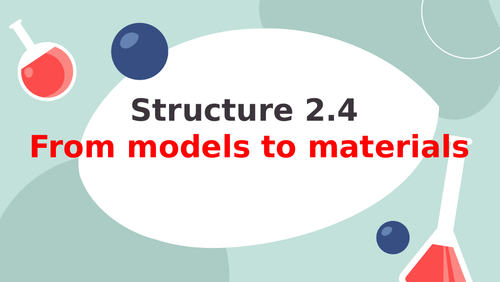





Structure 2.3 : The metallic model
Structure 2.3.1 : A metallic bond is the electrostatic attraction between a lattice of cations and delocalized electrons.
Structure 2.3.2 : The strength of a metallic bond depends on the charge of the ions and the radius of the metal ion.
Structure 2.3.3 : Transition elements have delocalized d-electrons.
Structure 2.4 : From models to materials
Structure 2.4.1 : Bonding is best described as a continuum between the ionic, covalent and metallic models, and can be represented by a bonding triangle.
Structure 2.4.2 : The position of a compound in the bonding triangle is determined by the relative contributions of the three bonding types to the overall bond.
Structure 2.4.3 : Alloys are mixtures of a metal and other metals or non-metals. They have enhanced properties.
Structure 2.4.4 : Polymers are large molecules, or macromolecules, made from repeating subunits called monomers.
Structure 2.4.5 : Addition polymers form by the breaking of a double bond in each monomer.Structure 2.4.6 : Condensation polymers form by the reaction between functional groups in each monomer with the release of a small molecule.
Something went wrong, please try again later.
This resource hasn't been reviewed yet
To ensure quality for our reviews, only customers who have purchased this resource can review it
Report this resourceto let us know if it violates our terms and conditions.
Our customer service team will review your report and will be in touch.
